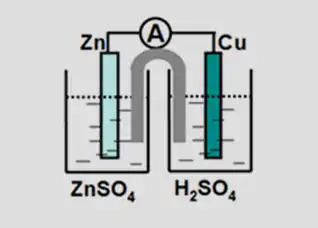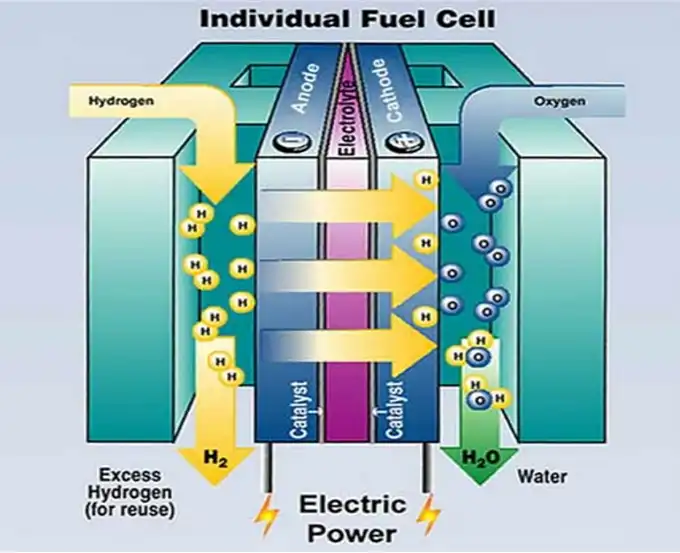Electrode reactions refer to the chemical reactions that occur at the electrodes where electrons are either lost or gained. The reaction where electrons are lost is called the anode reaction, and the electrode where this reaction occurs is called the anode. The reaction where electrons are gained is called the cathode reaction, and the electrode where this reaction occurs is called the cathode.
With this simple explanation, we believe everyone now has a basic understanding of electrode reactions. Next, we will delve deeper into the concepts of electrode reactions, anode reactions, and cathode reactions.
Basic Overview of Electrode Reactions
Electrode reactions are primarily carried out in various fuel cells and electrolytic cells. If the energy required to drive the electrochemical reaction is supplied by an external power source, it is referred to as the electrochemical reaction in an electrolytic cell. If the system spontaneously converts its chemical free energy into electrical energy, it is referred to as the electrochemical reaction in a fuel cell.
The charging process in primary chemical cells (batteries) belongs to the former category. Regardless of whether it is in electrolytic cells or fuel cells, electrochemical reactions involve at least two types of electrode processes—the anode process and the cathode process. Since electrode processes involve the transfer of charge between the electrode and the electrolyte, and free electrons do not exist in the electrolyte, some components will undergo oxidation or reduction at the “electrode/electrolyte” interface when current passes through, resulting in chemical reactions.

Electrode Reaction Rate
The electrode reaction rate is the amount of reaction products generated per unit electrode area per unit time. For example, in an electrolytic reaction, the unit of the product amount is mol/(m²·s).
According to Faraday’s laws of electrolysis, the amount of electrolytic products is proportional to the electric charge passing through the electrode. The amount of charge passing through per unit time is the current, and the current per unit area is the current density. Based on this relationship, the electrode reaction rate can be expressed in terms of current density. The higher the current density, the faster the electrode reaction rate; on the other hand, the electrode polarization (overpotential) also increases.
The electrode reaction rate is closely related to the electrode potential. When an electrode is at equilibrium potential (with no net current passing through it), the rates of the anode reaction (oxidation reaction) and the cathode reaction (reduction reaction) are equal. The anode reaction current density and the cathode reaction current density are the same, which is called the exchange current density (also simply known as the exchange current).
For a given electrode under specific conditions (material and surface state), with constant solution concentration and temperature, the exchange current density is a constant. It reflects the electrode’s reaction capability at equilibrium potential. When the exchange current density in an electrode is large, the rates of the anode and cathode reactions are also large.
When an electrode is in a polarized state, the anode reaction current density (reaction rate) and the cathode reaction current density are not the same. In other words, the polarization current densities of these two opposite electrode reactions differ, resulting in a measurable net current (also known as external current) passing through the electrode. Its value is equal to the difference between the anode and cathode reaction current densities, manifesting as a unidirectional oxidation or reduction reaction. In this situation, regardless of the type of chemical reaction, an electrode with a higher current density can achieve a larger net current density, i.e., a higher unidirectional electrode reaction rate, under a smaller polarization potential (overpotential). Conversely, if the exchange current density is very small, a considerable polarization potential (overpotential) is required to achieve a larger net current density, i.e., a higher electrode reaction rate.
Anode Reaction
In fuel cells, the anode reaction refers to the hydrogen oxidation reaction (HOR) on the surface of the anode electrocatalyst. When platinum is used as the anode catalyst, the mechanism of the electrocatalytic oxidation of hydrogen on the platinum surface generally includes three basic steps (where Pt represents the surface of the Pt catalyst, H-Pt represents a hydrogen atom adsorbed on the Pt surface, and e- represents an electron):

Generally, any reaction pathway will include the Volmer reaction, so the HOR reaction follows two most basic pathways: the Tafel-Volmer pathway and the Heyrovsky-Volmer pathway. For the Tafel-Volmer pathway, H₂ undergoes dissociative adsorption on the Pt surface (Tafel reaction). The two adsorbed hydrogen atoms each lose an electron and detach from the Pt surface, forming two protons and two electrons. For the Heyrovsky-Volmer pathway, the single-electron oxidation reaction of H₂ and chemisorption occur simultaneously, generating one adsorbed H, one proton, and one electron. The adsorbed H can continue to undergo single-electron oxidation reactions.
Due to the very fast kinetics of the oxidation process of H₂ on Pt metal, Pt is currently the best catalyst for HOR catalytic reactions. Typically, highly dispersed Pt/C catalysts are used, and the cell performance does not significantly decrease even when the Pt loading is reduced to 0.05 mg/cm².
Cathode Reaction
In fuel cells, the cathode reaction refers to the oxygen reduction reaction (ORR) on the surface of the cathode electrocatalyst. The four-electron reduction reaction of O₂ in an acidic electrolyte can be expressed as:

The thermodynamic equilibrium potential for the cathodic ORR is 1.23V (vs. NHE, 298K). The difference between the ORR electrode potential and the equilibrium potential is the overpotential that drives this reaction. The overpotential is directly related to the operating efficiency of the fuel cell; the higher the overpotential, the lower the operating efficiency of the fuel cell. The role of an efficient electrocatalyst is to achieve the required current density at a lower overpotential.
However, even on platinum electrodes, which have the best oxygen reduction performance, the overpotential for cathodic oxygen reduction is usually above 0.25V. Therefore, for PEMFC technology, the cathode overpotential during operation is typically as high as 0.4V to achieve the rated output current. This can only be achieved when the cathode contains a significant amount of precious metal catalysts. Gasteiger and others found that when using the best-performing Pt/C catalyst as the cathode catalyst, the Pt loading needs to be close to 0.4 mg/cm². Reducing the Pt loading further would lead to a decrease in cell voltage due to ORR kinetic losses, especially at low current densities. Therefore, the cathode requires more Pt loading than the anode to maintain cell performance.
Due to the limited availability and high cost of Pt, it is essential to significantly reduce the Pt loading at the cathode to promote the large-scale industrialization of proton exchange membrane fuel cell (PEMFC)-powered electric vehicles.
Note: ORR reaction mechanism of Proton exchange membrane fuel cells
Summary:
Electrode reactions in fuel cells, especially the anode and cathode reactions, are the core of cell performance. Through detailed analysis of the hydrogen oxidation reaction (HOR) at the anode and the oxygen reduction reaction (ORR) at the cathode, we can better understand and optimize the efficiency and lifespan of fuel cells.
In the future, with advances in technology, it is expected that scientists will develop more efficient and cost-effective catalyst materials, significantly reducing the manufacturing cost of fuel cells and promoting their large-scale commercial application in fields such as electric vehicles. Whether by improving the utilization efficiency of existing platinum-based catalysts or exploring new catalyst systems, we will continue to strive towards achieving the goal of carbon neutrality.
Related articles:
What are the main differences between PEM fuel cell,FCAFC,MCFC,SOFC and DMFC ?
Detailed Explanation of the Structure and Principle of Proton Exchange Membrane Fuel Cells
The influence of bipolar plate structure on fuel cell performance

